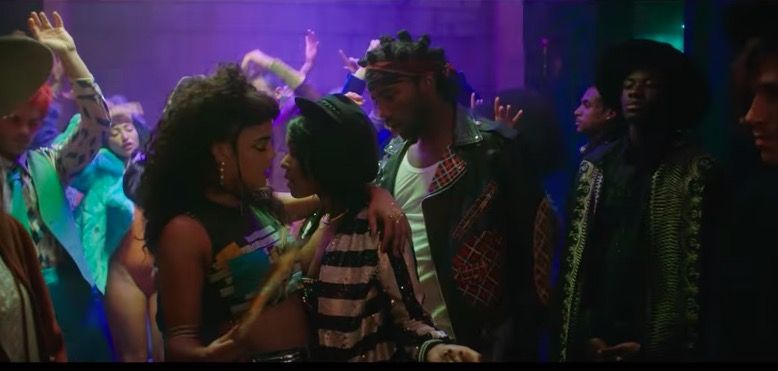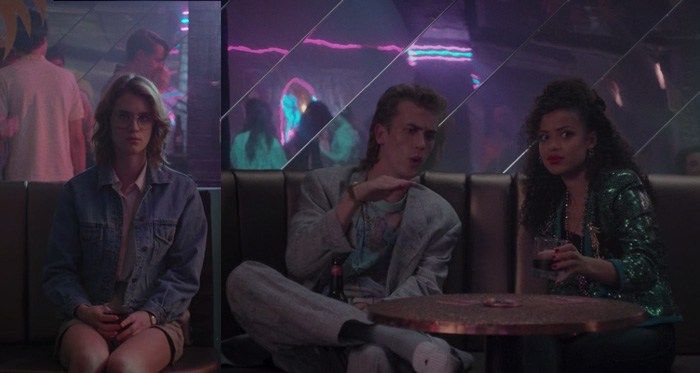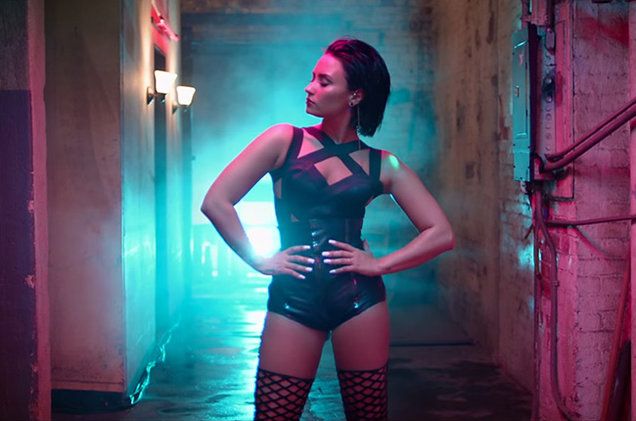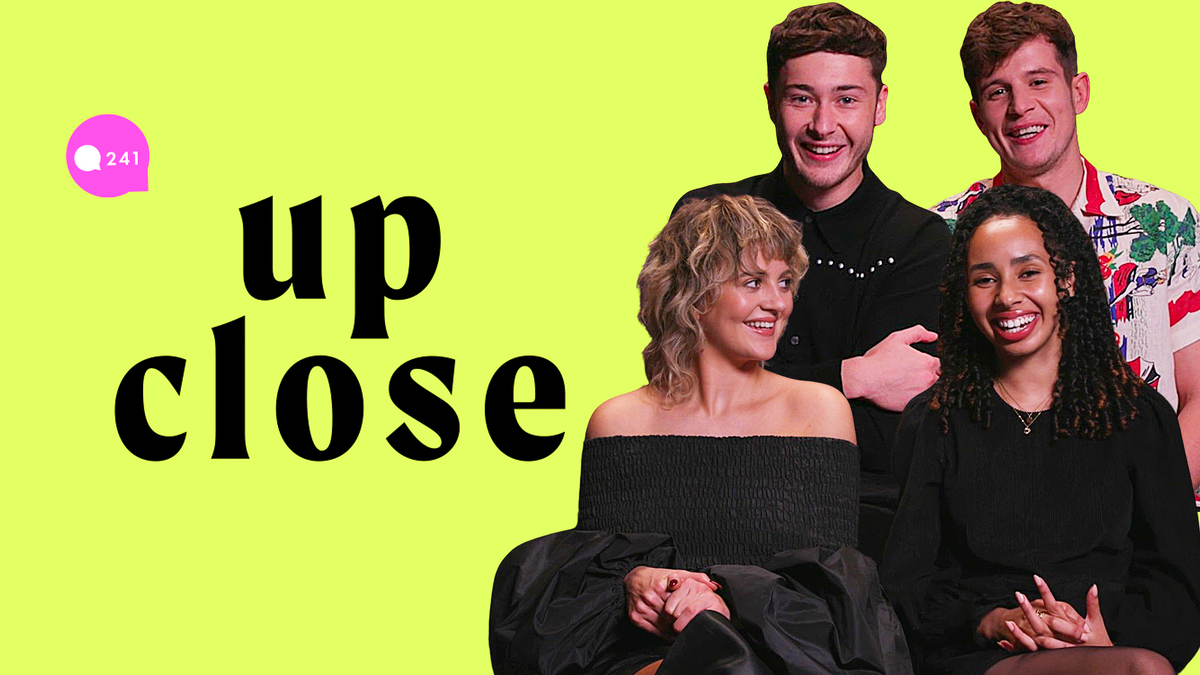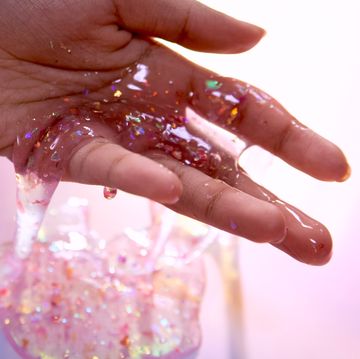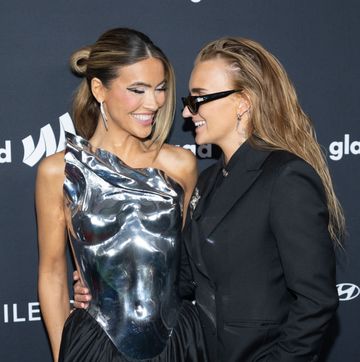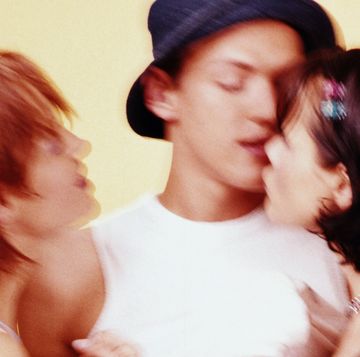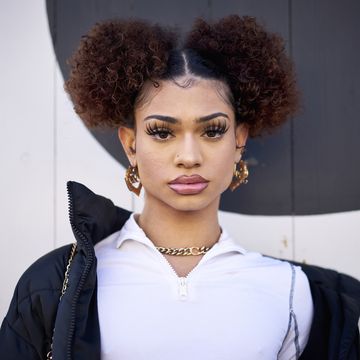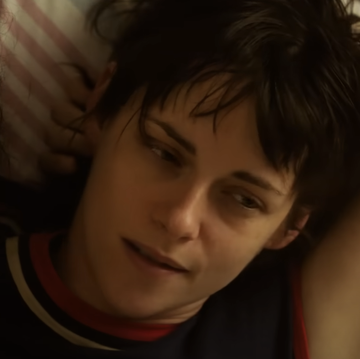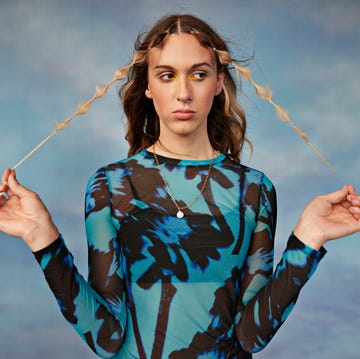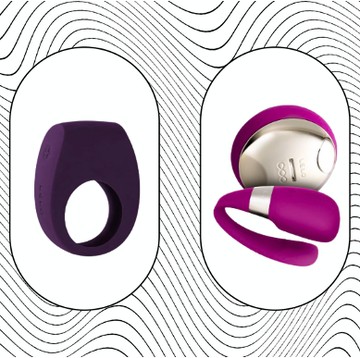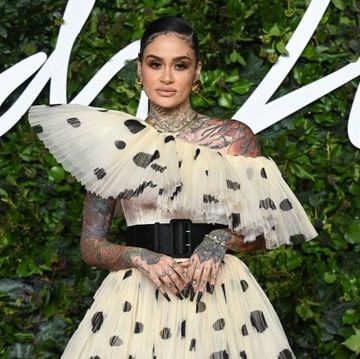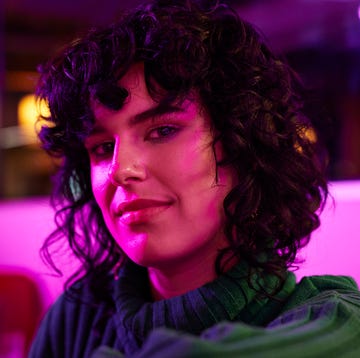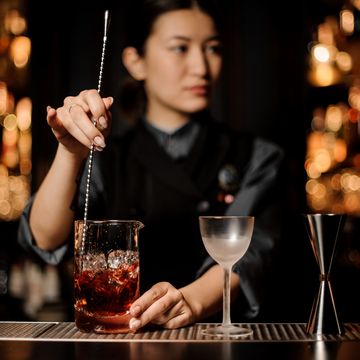Since Janelle Monáe’s video for her single ‘Make Me Feel’ dropped, the term ‘bisexual lighting’ has been thrown around a lot. Why? She’s seen bathed in pink, blue and purple lighting (the colours of the bisexual flag, FYI), being pulled back and forth between a man and a woman. Monáe flirts with both men and women in a club, singing, “Don’t make me spell it out for you. You keep asking me the same questions.”
The general consensus seems to be that it is super cool, sexy and exciting. Who wouldn’t love to be followed around by a constant stream of gorgeous pink lights? Perfect for selfies, tbh.
My first encounter with bisexual lighting was the San Junipero episode of Black Mirror. It documented the relationship between two women, Yorkie and Kelly. And it did so without over-sexualising or inflating their romance. But, despite feeling seen and represented, something didn’t sit right with me about the setting. In spite of the women being old ladies, the main part of their relationship played out in a simulated reality where they were young, and most of their romantic scenes were set in nightclubs, under - you guessed it - bisexual lighting.
Bisexuality isn't an ‘experiment’ or ‘phase’
While this ‘experimental’ sentiment in Black Mirror and the ‘Make Me Feel’ video may be aesthetically pleasing, it only perpetuates these stereotypical ideas of bisexuality being a ‘phase’ or something experimental.
Demi Lovato, who’s spoken openly about her bisexuality, sings with all the subtlety of a brick to the face in ‘Cool for the Summer’. The lyrics, about “tasting a bite of the cherry”, are sang while she’s bathed in purple neon lighting, surrounded by beautiful women.
As a bisexual woman, Lovato has every right to do these things - I’m not saying every song about bisexuality has to be about a nice, settled down, monogamous relationship (I’m not a complete fun sponge). But singing about experimenting, under coded lighting, is problematic in the way it plays into commonly accepted misconceptions surrounding bisexuality; that we lack morality, are greedy, confused and prone to cheating.
Katie, 21, makes the point that ‘bisexual lighting’ upholds the misguided belief that bisexual people are more likely to be unfaithful because they’re attracted to more than one gender. “While ‘bisexual lighting’ exists as the sole signifier of a bisexual relationship, these views are not going to be challenged,” she says.
There’s also a huge misconception that bisexuality exists simply because someone has the ‘inability to choose’, and therefore bi people are horny for anyone they see on the street. Obviously this isn’t the case, but the heated nightclub hook-up scenes don’t help.
Regardless of the setting, portraying bisexual people in neon lighting in general (which we can’t help but associate with clubs and dancefloors), only further reduces us to our stereotypes. The implication is that bisexual hook-ups and relationships are merely ‘experiments’, and something that only happens when you’re drunk on a night out. It reduces real relationships, and genuine sexuality, to the Katy Perry I Kissed A Girl chorus; an incarnation of just wanting to ‘try someone on’.
I get why seeing bisexual lighting used more widely in pop culture may be viewed as empowering by some (on the surface, at least). For so long, people who identify as bisexual have been underrepresented in TV and film, so the idea that the sexuality is significant enough to get its own, recognisable trope feels kinda nice.
Rachel, 26, appreciates the “undertones of explicitness” and that these TV shows and music videos have “made a choice to include bisexuality in a recognisable, visible way”. And I agree to an extent.
Heterosexuality is the norm (yawn) in mainstream media, which admittedly has been peppered more recently with gay relationships – albeit mainly cis, white men. It often seems bisexuality is deemed too ‘messy’ an issue to tackle on screen. It’s either simply alluded to, left out, or treated like a temporary plot device. Remember how Piper from Orange is the New Black is referred to as a ‘straight girl’, despite having a husband and sleeping with women? Sometimes, it’s even glossed over entirely. Anyone else notice how Eleanor hit on Tahani in The Good Place, without her bisexuality ever being addressed?
To Amy, 33, it feels like a “cover up”, and a way to express bisexual sentiments without really stepping away from ‘hetero turf’. She says when films use the lighting, it “feels like a bisexual interlude for a character is something they just try out, and despite it seeming very meaningful at the time, they can always go back to the Life Plan they had. The coded lighting just seems to enhance the idea that the experience takes place in something like a dream sequence, with no real repercussions.”
Female relationships in particular, are so often over-sexualised (and even fetishised) by heterosexual men, that only portraying them within a dressed up, drunken and glamorous setting plays to this idea that they only exist for the titillation of men. Bisexual relationships should be given the space and screen time to be real, raw and include all the negativities heterosexual relationships are allowed. Likening an already underrepresented sexuality to an ‘aesthetic’ is reductive, and again minimises the credibility of bisexual relationships.
While bisexual lighting may be a step forward in terms of on-screen bi-visibility, there needs to be the option of allowing bisexual relationships to blossom naturally without relying on potentially harmful tropes, signifiers or stereotypes. When bisexuality is reduced to an aesthetic, it only upholds outdated stereotypes. And that can only be a harmful thing.
Follow Amelia on Instagram.
